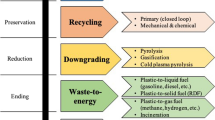Abstract
Despite more than 20 years of economic progress, especially in emerging economies like Brazil, the gap between developed and developing countries is still large, and environment problems have risen significantly. In this context, this paper aims to make the Brazilian furniture production cleaner, analyzing the environmental requirements considered by the micro and small enterprises (SMEs) in made-to-order furniture industry during the product development process (PDP). Another attempt was to identify the internal and external factors that led to the incorporation of these requirements. In this regard, a comprehensive review of eco-design concept that consists of composing environmental requirements into the PDP, through methods, tools, guidelines and techniques, was carried out. The data were collected using semi-structured interviews and in loco observations, analyzing each activity of the PDP and the environmental requirements on 18 SMEs in Brazil. The outcomes show that the economic factors determine the way in which the enterprises respond to the environmental issues and how adequate their companies according to laws and regulations. Moreover, the small number of qualified professionals in this field lead to difficulties to structure the sector, in other words, to produce with less environment impact.



Similar content being viewed by others
References
Ammenberg, J., & Sundin, E. (2005). Products in environmental management system: Drivers, barriers and experiences. Journal of Cleaner Production, 13(14), 405–415.
Bonoma, T. V. (1985). Case research in marketing: Opportunities, problems, and process. Journal of Marketing Research, 22(2).
Borchardt, M., Wendt, M. H., Peirera, G. M., & Sellitto, M. A. (2011). Redesign of a component based on ecodesign practices: Environmental impact and cost reduction achievements. Journal of Cleaner Production, 19(1), 49–57.
Daian, G., & Ozarska, B. (2009). Wood waste management practices and strategies to increase sustainability standards in the Australian wooden furniture manufacturing sector. Journal of Cleaner Production, 17(17), 1594–1602.
Davenport, T. H. (1994). Process reengineering: How to innovate in business through information technology. Rio de Janeiro: Ed. Campus.
Dittrich, M., & Giljum, S. (2012). Green economies around the world? Implications of resource use for development and the environment. Vienna. Available at: http://seri.at/wp-content/uploads/2012/06/green_economies_around_the_world.pdf.
Eshun, J. F., Potting, J., & Leemans, R. (2012). Wood waste minimization in the timber sector of Ghana: A systems approach to reduce environmental impact. Journal of Cleaner Production, 26, 67–78.
Gorobets, A. (2011). The global systemic crisis and a new vision of sustainable human development. Environment, Development and Sustainability, 13(4), 759–771.
Hills, W. (1995). Generic research for design of made-to-order engineering products. Design Studies, 16, 489–505.
Koskela, M. (2011). Expert views on environmental impacts and their measurement in the forest industry. Journal of Cleaner Production, 19(12), 1365–1376.
Malaguti, C. (2005). Environmental requirements for product development: Technical manual. São Paulo: CSPD—Centro São Paulo Design.
Massote, C. H. R., & Santi, A. M. (2012). Implementation of a cleaner production program in a Brazilian wooden furniture factory. Journal of Cleaner Production, 46, 89–97.
Movergr. (2013). Setor moveleiro—Panorama Brasil e RS. http://www.movergs.com.br/views/imagem_pdf.php?pasta=panorama_setor_moveleiro. Accessed 10 October 2013.
Plouffe, S., Lanoie, P., Berneman, C., & Marie-France Vernier, M. F. (2011). Economic benefits tied to ecodesign. Journal of Cleaner Production, 19(6–7), 573–579.
UNEP. (2011). Towards a green economy: Pathways to sustainable development and poverty eradication—A synthesis for policy makers. Available at www.unimep.org.
United Nations Industrial Development Organization. (2011). UNIDO green industry. Policy for supporting green industry. Vienna: UNIDO.
Valle, T. F., et al. (2012). Using eco-design tools: An overview of experts’ practices. Design Studies, 34(3), 345–377.
Van Caneghem, J., Block, C., Van Hooste, H., & Vandecasteele, C. (2010). Eco-efficiency trends of the Flemish industry: Decoupling of environmental impact from economic growth. Journal of Cleaner Production, 18(14), 1349–1357.
Vezzoli, C. (2007). System design for sustainability: Theory, methods and tools for a sustainable “satisfaction-system” design. Milão: Maggioli editore.
Author information
Authors and Affiliations
Corresponding author
Rights and permissions
About this article
Cite this article
Lopes, C.S.D., de Azevedo, P.S. Environmental requirements for furniture industry: the case study of Brazilian Southeast industry. Environ Dev Sustain 16, 1013–1029 (2014). https://doi.org/10.1007/s10668-013-9508-3
Received:
Accepted:
Published:
Issue Date:
DOI: https://doi.org/10.1007/s10668-013-9508-3




